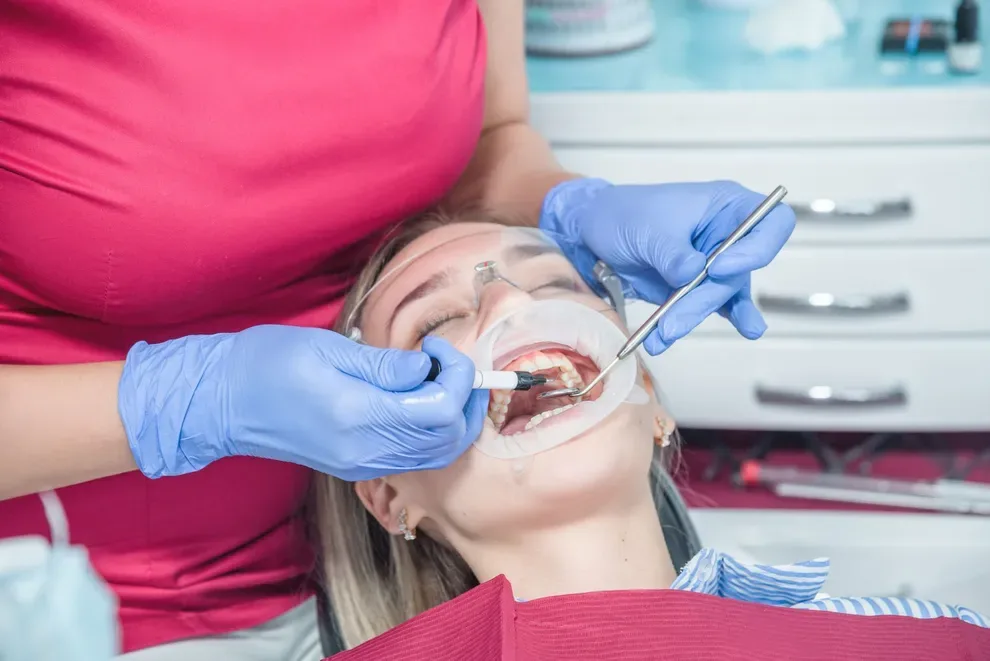Throbbing Tooth Pain

Table of Contents
- Common Causes of Tooth Pain
- Relieving Tooth Pain
- When to See a Dentist
Toothaches are a common dental ailment, and you may experience minor discomfort because of dental decay, a dental injury or gum disease. But sometimes you develop a throbbing tooth that presents so much pain that you must deal with it immediately.
The pain can scare you because you can’t always be sure of what’s causing it, so you’re not sure how to make it go away.
While you wait to see your dentist for a verdict on the cause and solution, you can use several at-home remedies to help relieve your pain. Monitor your symptoms carefully and be ready to visit your local dental office quickly if you believe your condition isn’t improving and you’re weary of dealing with the discomfort.
Common Causes of Tooth Pain
Intense pain in a tooth usually develops because of a problem with your teeth or gums. The most common causes include:
An untreated cavity
A dental abscess
An infection
Loose or broken fillings
Trauma to the tooth from a punch, fall, or other severe impact
A cracked or broken tooth
Infected or inflamed pulp inside your tooth
Inflamed gums or advanced gum disease
Pain can also occur for reasons that have nothing to do with the state of your oral health. Among them:
A recent dental cleaning. People with sensitive teeth might feel a bit sore after a routine cleaning at their dentist’s office.
Freshly tightened braces. Orthodontists often warn their patients that their teeth may be sensitive for some time after their braces are adjusted.
Neurological issues. Certain neurological conditions such as trigeminal neuralgia can cause intense facial pain that may be mistaken for tooth pain.
Remedies for Relieving Tooth Pain
Regardless of the underlying cause of your toothache, there are several things you can try to relieve your pain. Home treatments include cold compresses, ice packs, ointments, oral medications and mouth rinses. If your pain is particularly bad, you may want to combine two or more of these remedies.
Over-the-counter pain relievers like Tylenol and Advil work well on mild toothaches. For safety’s sake, be sure to follow the dosage instruction on the packaging and do not offer any product containing aspirin to children under 19 years of age. If you are unsure whether a particular medication is safe or will be effective for you, consult your pharmacist for guidance.
Applying a cold compress to your face close to where the pain is coming from can help soothe the pain of your toothache. You can use a chilled damp cloth, a lunchbox ice pack, or even a bag of ice or frozen food for this task. The cold from the compress will constrict the blood vessels around the area and cause temporary numbness in that spot. This method is especially effective when the pain is caused by a tooth injury or swollen gums.
Ice is always the first medical treatment for pain and swelling. You can fashion an ice pack from a Ziplock full of ice or from ice wrapped in a washcloth. You can also use small freezer packs (but cover it with a cloth napkin or washcloth so you won’t burn your skin. Bags of frozen peas, frozen corn or frozen carrots are useful, too. Hold the ice packs in place for 20 minutes and repeat as needed.
You can buy several topical ointments containing benzocaine or lidocaine (mild numbing agents) at your local drug store. Some common brand names for these products include:
Orajel
Anbesol
Orabase
Topex
Cetacaine
Xylocaine
When applied to the gums at the site of your toothache, these ointments dull your sensation in this area, helping your toothache pain feel less overwhelming.
These products are safe for adults, but the FDA recommends that they not be used on young children due to the risk of them developing a rare condition called Methemoglobinemia. If your child is suffering from a toothache, it is best to choose an alternate remedy.
A homemade oral rinse can disinfect your mouth and help to reduce any inflammation you are experiencing. You can use either salt water or a combination of 3% hydrogen peroxide mixed with equal parts water. Swish the rinse around in your mouth for at least 30 seconds, but do not swallow it. Spit it out and repeat as needed.
When to See a Dentist
A throbbing tooth sometimes indicates a more serious problem. If so, these issues will not resolve themselves without professional treatment. Schedule a visit with your dentist immediately if you experience any of the following:
Pain that does not go away after two or more days
Pain that does not respond to pain medication
A fever
Swelling of the face, jaw, or gums
Visible damage to the tooth, including chips, cracks, and broken areas
Sharp pain when you bite down
Lingering pain when the tooth is exposed to hot or cold temperatures
A bad taste or smell in your mouth
Visible pus coming from a sore inside your mouth
